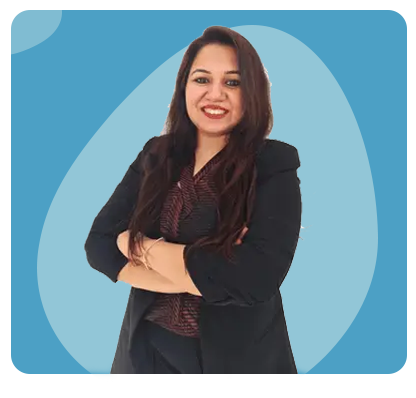Speech and language are the building blocks of effective communication and are essential for a child’s overall development. From forming their first words to expressing complex emotions and ideas, children rely on these skills to navigate the world around them. However, many children experience challenges in these areas due to speech and language disabilities.
These difficulties, if not addressed early, can impact a child’s social interaction, academic performance, and self-esteem. In this blog, we explore the most common speech and language disabilities in children, including their causes, symptoms, treatments, and how timely intervention can make a lasting difference.
What is a Speech and Language Disability?
A speech and language disability is a condition that impairs a child’s ability to communicate effectively. It may involve issues with speech (the physical act of speaking), language (the ability to understand and use words and sentences), or both.
Speech disabilities typically involve problems with:
- Articulation: Difficulty forming sounds correctly.
- Fluency: Interruptions in the flow of speech, such as stuttering.
- Voice: Issues with pitch, volume, or quality of sound.
Language disabilities involve challenges with:
- Receptive language: Trouble understanding what others say.
- Expressive language: Difficulty using words to express thoughts, needs, or ideas.
These disabilities may be congenital or acquired and can exist independently or as part of other developmental disorders such as autism spectrum disorder (ASD), cerebral palsy, or intellectual disabilities.

How Common Are Speech and Language Disabilities in Children?
Speech and language disabilities are among the most common developmental disorders in children. According to the American Speech-Language-Hearing Association (ASHA), 1 in 12 children aged 3 to 17 has a speech, language, voice, or swallowing disorder.
- Boys are more likely to be affected than girls.
- Children with a family history of communication disorders are at greater risk.
- Premature birth, hearing loss, and developmental delays also contribute to increased risk.
Early diagnosis is essential. When identified in the preschool years, children are more likely to catch up with their peers through targeted therapy and support.
Symptoms of Speech and Language Disability
The symptoms of speech and language disability vary depending on the nature and severity of the disorder. Some children may only have minor articulation issues, while others may face severe expressive and receptive language difficulties. Common signs include:
Speech-Related Symptoms:
- Inability to pronounce words correctly (e.g., saying “wabbit” for “rabbit”)
- Hoarse, breathy, or nasal voice
- Speaking in a monotone voice or inappropriate pitch
- Frequent stuttering or repeating sounds/syllables
- Limited speech clarity even after age 4–5
Language-Related Symptoms:
- Starts speaking later than other children (like not using two-word phrases by age 2)
- Struggles to understand simple questions or instructions
- Uses fewer words than expected for their age
- Has trouble making full sentences or using correct grammar
- Finds it hard to follow conversations or tell simple stories
- Gets frustrated when trying to talk, often leading to tantrums
If your child consistently shows any of the above symptoms beyond age-appropriate milestones, it’s advisable to seek an assessment from a speech-language pathologist (SLP).

How Can Speech and Language Disabilities Be Treated?
Treatment for speech and language disabilities in children depends on the specific diagnosis and the child’s individual needs. Early intervention offers the best results, often leading to significant improvement in communication skills. Here are the most effective treatment approaches:
1. Speech Therapy (SLP Sessions)
A licensed speech-language pathologist (SLP) works closely with the child using therapy plans tailored to their individual needs. The focus is on improving speech clarity, language skills, and overall communication.
- Improves pronunciation and clarity
- Builds vocabulary and sentence structure
- Manages stuttering, fluency, and voice issues
- Strengthens understanding and expression
Therapy can be delivered in one-on-one, group, or online sessions depending on the child’s needs.
2. Parental Involvement at Home
Parents play a vital role in reinforcing progress outside therapy by practicing communication skills at home. Their daily involvement helps build confidence and supports faster improvement in the child’s speech and language development.
- Practice speech exercises daily
- Encourage regular conversation
- Read books aloud and ask open-ended questions
- Use simple, clear language and repetition
Consistent home practice accelerates development.
3. School-Based Support
Schools provide structured help for children facing communication delays through special education services and speech therapy sessions. They also offer support like Individualized Education Plans (IEPs) and classroom accommodations to aid learning.
- Individualized Education Plans (IEPs)
- In-school speech therapy by trained specialists
- Visual aids, extended time, or simplified instructions
Educational support ensures continued progress in classroom settings.
4. Use of Visual Aids and Tools
Assistive tools support children with limited verbal abilities by helping them express their needs and understand others. These may include picture cards, visual schedules, or speech-generating devices.
- Picture boards and flashcards
- Visual schedules and cue cards
- Speech-generating devices or mobile communication apps
These tools help children express their needs and improve interaction.
5. Multidisciplinary Collaboration
In more complex cases, support from multiple specialists ensures holistic care by addressing all aspects of the child’s development. This team may include speech therapists, occupational therapists, audiologists, and developmental pediatricians.
- Occupational therapists (for oral-motor or coordination issues)
- Audiologists (if hearing affects speech)
- Developmental pediatricians or psychologists (if underlying conditions exist)

Final Thought
Every child deserves the opportunity to communicate, express themselves, and be understood. If your child is struggling with speech or language, know that you are not alone—and help is available.
Early identification and proper intervention can transform your child’s future. The team at Nurturers is dedicated to providing specialized support for children with speech and language disabilities, ensuring they receive the personalized care they need to thrive.
Whether your child is showing early signs of delay or has already been diagnosed, we’re here to help guide you every step of the way—because every child’s voice matters.

